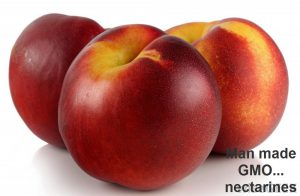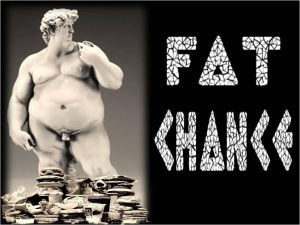 Dr Wallach says: what you don’t put in your mouth is more important to your well-being, than what you do put in your mouth.
Dr Wallach says: what you don’t put in your mouth is more important to your well-being, than what you do put in your mouth.
An article I just looked at says: what you don’t do is more important to your productivity, money, well-being, than what you do…
WTF, right?
It makes no sense… after all yes should be more important, but it isn’t.
Let’s see how it works in the area of health:
You get up. You eat breakfast, lunch, dinner, some snacks. At the end of the day you consumed about 25% of your daily essential nutrients. The food can be organic, expensive, and yet…
Unless you supplement all 90+ essential nutrients plus good water, you are damaging your health, every day of your life.
The highest health number I have ever measured for someone who is not a client and NOT on Dr. Wallach’s nutritional regimen, is 10%.
 Someone who is on Dr. Wallach’s 90 essentials regimen has a health number of 30%. Their cell hydration is still low, but they have a lot more energy than you, and they can tolerate being dehydrated a lot better than you.
Someone who is on Dr. Wallach’s 90 essentials regimen has a health number of 30%. Their cell hydration is still low, but they have a lot more energy than you, and they can tolerate being dehydrated a lot better than you.
 If you add the food list, that eliminates food that is toxic for YOUR body, then the number can go all the way to about 50%.
If you add the food list, that eliminates food that is toxic for YOUR body, then the number can go all the way to about 50%.
The list of the 90 essentials in only 65% accurate, there should be 96 items there… but 90 is pretty good.
The other “issue” with the 90 essentials is that depending on your work, on your temperament, on what you actually put in your mouth, you need more or less of each nutrient.
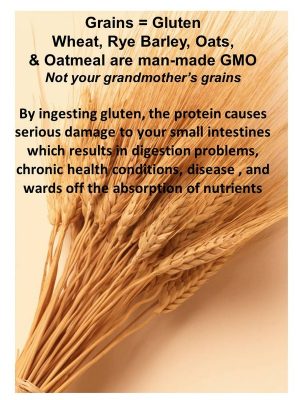 Wh
Wh
en I am stressed, I need more of certain trace minerals. When I give a webinar, it pretty much uses up enough nutrients that normally sustain me for a week… I am exaggerating, but only a little bit.
So what can you do? You can only do the best you can… supplement with all 90 nutrients, and double up on them when something seems to need more of you than normal.
Dr Wallach, in addition to filling himself up with the 90 essentials, also looks at what goes into his mouth, to the best of his understanding. His health number is 50%.
My health number is 70%, but I am not satisfied with it.
My weight is within five pounds (2 kg) from my ideal weight. I haven’t reduced how much I eat in the past 6 months when I dropped 33 lbs.
When I query Source why I don’t feel better, the answer always comes down to this: I eat too much, I digest too little, and my body is ravaged by inflammation.
Doggonit!
 According to muscle test, every and all food I put in my mouth causes inflammation. Darn!
According to muscle test, every and all food I put in my mouth causes inflammation. Darn!
No wonder that the groups that live longest on earth subsist on very tiny amount of food.
I am now gradually reduce my food intake… and take systemic enzymes to gobble up the inflammation causing proteins in my blood… and in my intercellular fluid.
So, as you can see, what I haven’t said no to has more effect on my health than what I have, unwittingly, automatically, said yes.
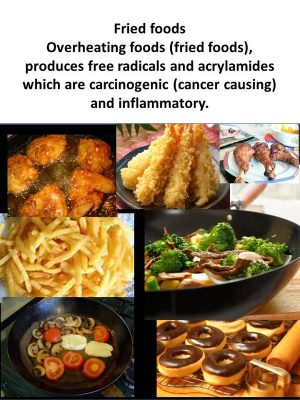 And previously the same was the situation with nutrition.
And previously the same was the situation with nutrition.
I never said i was very smart. For 60+ years I undernourished my body, and so did my mother… that’s why I was born with dyslexia and other troubles.
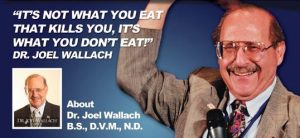 Summary: I am not following my feelings, I am not following my gut in this process of saying yes or saying no. My gut is wrong 80% of the time. My feelings: ditto.
Summary: I am not following my feelings, I am not following my gut in this process of saying yes or saying no. My gut is wrong 80% of the time. My feelings: ditto.
The only things I do by the feelings, because there they are more reliable than what I know, is deciding if I am ready to eat… i.e. if I have an appetite, and if I am thirsty.
I also trust my “I need some rest…” especially because it is so rare.
OK, let’s look at other areas of life… like personal growth, work, learning, the other pillars of the good life: wealth, love, and fulfillment.
I the principle of not going by what you feel is true… let’s consider that it is true everywhere.
This does not mean you suppress what you feel. It only means that you feel what you feel, and learn a better way.
If your TLB score (Twitchy Little Bastard aka Marshmallow Eater score) is low, then most things that serve you are coupled with an unpleasant feeling.
What did you expect? That need of cleaning your bathroom will come as a good news feeling? lol… No… it will come with a… “No, not again!” feeling.
Why? I am not able to explain why. But I can tell you this: we have been misguided. How long? I think maybe ever since words came to being…
The feelings that guide you to do the right thing have been unpleasant since the beginning of life.
Just look at hunger… ugh.
Look at thirst… ugh.
Look at being horny… ugh.
Look at fear… ugh.
Look at loneliness… ugh.
These are the five “hardware based feelings” every human has… and they are all unpleasant. And they go away when you do what they are guiding you to do. Eat, drink, screw… etc.
Why would anyone think that doing what makes your environment healthy, makes you money, makes life easier, faster, more organized, getting useful knowledge, etc. will come with a pleasant guiding feeling?! Are you stupid?
Yeah. You swallowed that myth, and now you suffer.
The more unpleasant the feeling the more guiding it is. And the more pleasant it is, the more astray it drive you.
This is why your TLD score is so instrumental: your TLD score is low if you choose what’s pleasant, not what is unpleasant. In the Marshmallow experiment, waiting was murder… felt bad. That is how life is… really. The bad feeling leads you to the right action…
OK… here is an article on saying no… I am copying it here, because I don’t feel like writing something similar. It’s OK… based on sound judgment.
Five Ways To Say “No” So You Can Finally Reclaim Your Focus
Staying productive is all about consciously deciding what not to do. Here’s how.
It isn’t news that culture is obsessed with doing—with being in motion, with being occupied, with being busy. But the upshot of all this doing is that we spend very little time deciding exactly what we should be doing in the first place.
Real productivity is more than just activity, after all. And when we’re asked to act upon (or ignore) hundreds of updates, requests, and interruptions every single day, to actually step back and decide can be much more difficult than to simply do. Amid all this bombardment, being truly productive depends upon your ability to say “no.” In other words, what you don’t do on a daily basis is at least—if not more—important than what you actually do take action on.
Of course, saying “no” is easier said than done. Many of us have an intuitive desire to please others, to explore every opportunity, to take on more than we can handle, and worry about the consequences later. But if you can master the art of saying “no,” you can prevent your time and focus from being held captive by a constant barrage of requests and distractions. Here are a few practical techniques that can help.
1. MAKE A “STOP-DOING LIST”
Saying “no” is all well and good as an abstract concept, but you can’t do it consistently without a plan. The first step is to identify what activities are creating the biggest drag on your productivity—and to actually list them out. I picked up this tip from best-selling business author Jim Collins, who makes a habit of sitting down at the outset of every year to draw up a “stop-doing” list.
The idea is to identify a short-list of habits you want to avoid in the new year. Some things on my “stop-doing” list:
- I don’t schedule meetings in the morning (my prime creative time).
- I don’t treat emails from strangers as urgent.
- I don’t read the news at work.
But keep it short, and focus on just a few key things you can really commit to avoiding. A brief list of simple, broad-strokes ideas is better than a long, overly detailed list of pet peeves.
2. WRITE TOMORROW’S TO-DO LIST TONIGHT
The easiest way to avoid distraction is to hit the ground running. That’s why I like to close out my workday by jotting down in advance my to-do list for the day ahead.
If I wake up with a clear picture of my key priorities, I’m infinitely more productive and relaxed. What’s more, I’m also much better at deciding what not to do and which requests to turn down, because what I need to do is already mapped out—I’ve already decided. By contrast, kicking off the day without a plan opens you up to working reactively, letting other people’s demands dictate what you do with your day.
It’s a lot easier to say no to unwanted additions to your to-do list if you’re crystal clear on what you want to accomplish and why.
3. SWITCH TO BATCHING YOUR EMAIL TIME
Inefficient emailers operate as “reactors,” relying on notifications and near constant monitoring to nibble away at an endless pile of unread messages throughout the day.
Productive emailers, on the other hand, are “batchers,” setting aside a few time slots each day to power through their inboxes—and say “no” to email interruptions outside those designated windows. Not surprisingly, batchers , happier, and less stressed out at work.
Here are a few tips for shifting toward a batched approach:
- Set aside two or three 30– to 45-minute windows each day for processing your inbox, giving it 100% of your focus.
- Turn off all push notifications and instead use an app like Inbox When Ready to show you new messages only when you want to see them.
4. TEACH PEOPLE TO EXPECT YOU’LL SAY “NO”
Whether it’s in your inbox or in-person, don’t fall victim to the assumption that you have to say “yes” to every single request. If you do, others will quickly pick up on that and take advantage.
This is especially true for things you probably can go either way on—a request for an interview or coffee meeting, an invitation to speak at a conference, or a pitch to demo a product. In most of these cases and many others, the person doing the asking is just testing the waters. They’ll be happy if you say yes, but they don’t feel entitled to your time.
So rather than assuming that every asker expects you to say “yes”—and resenting the unwanted obligation—experiment with assuming that they already think it’s a long shot. Reframing the situation like this makes it easier to put seemingly pushy emails or phone calls into perspective so you can consider the opportunity with a relaxed attitude.
Once you level the playing field between the possibility of saying “yes” and the possibility of saying “no,” it becomes easier to gracefully decline inquiries that don’t match your priorities.
5. SWAP “I CAN’T DO THAT” WITH “I DON’T DO THAT”
Another way to reclaim your focus is through simple tweaks to how you communicate. Language is powerful, and the way that you say “no” can have an outsize impact on people’s perception of you at work. In a 2012 study, researchers found that it was easier for people to stick to resolutions if they said “don’t” instead of “can’t.”
So, for instance, you might say, “I don’t schedule meetings before 11 a.m.” instead of “I can’t schedule meetings before 11 a.m.” (Scroll or swipe back up to my “stop-doing” list above and you’ll notice there are all kinds of ways to make this change.)
When you say you “can’t do” something, it may implicitly convey weakness and inadequacy—giving the sense that you might want to do the task but aren’t actually able to. Whereas when you say you “don’t do” something, it conveys power and conviction, a feeling of a rule to which you are staunchly committed.
And make no mistake: Preserving your productivity and defending your focus does take commitment. But once you actually decide to do it, it’s something you can keep saying “yes” to.
Read the original article: What is a more important word, yes or no?
